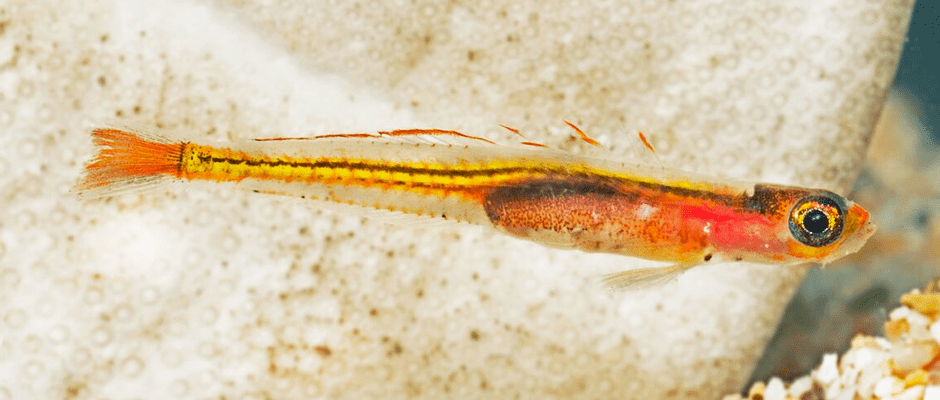Share this article
Lionfish documented preying on previously unknown species
Known to wreak havoc along shallower reefs by outcompeting or eating up native organisms, invasive lionfish (Pterois volitans) are now swimming into deep, largely unexplored reefs and devouring species scientists haven’t even found yet, suggests recent research from the Caribbean.
“There are a lot of undescribed species living on deep reefs below 200 feet, and some are going to wind up in the guts of lionfish,” said Luke Tornabene, lead author on the study published in PLOS ONE. “It places importance on controlling lionfish populations and understanding the diversity of our waters better.”
In 2015, co-author Carole Baldwin submerged off the coast of Curaçao in a submarine in the southern Caribbean Sea to collect specimens of an unfamiliar goby she’d come across earlier on the deep reef. The fish weren’t hard to find again here because they swim in schools of hundreds and have shiny reddish-orange scales. But Baldwin, a research zoologist with the Smithsonian Institution, also ran into something else that hadn’t been previously recorded: invasive lionfish preying on this new species. The dive captured this interaction on video and brought back samples of the goby, which the researchers named Palatogobius incendius after genetically confirming it was a distinct species.
“This was the first time we’ve seen an invasive species, the lionfish, preying upon a species that had not been known to science,” said Tornabene, an assistant professor with the University of Washington’s School of Aquatic and Fishery Sciences. “Other species that live on these deep reefs are not as abundant as this new goby, yet we suspect lionfish are still eating many of them, including other undescribed species.”
This discovery is part of a broader Smithsonian study around the Caribbean islands, he said, which since 2011 has been examining unexplored deep-reef communities. These are ecosystems where ordinary scuba diving equipment can’t reach and many mysterious species exist, unlike well-studied shallower reefs.
“In 2011, about 30 percent of species we were observing on these deep reefs were not described by science,” Tornabene said. “It was pretty shocking.”
But wherever they dove and noted new species, the biologists also saw lionfish, even at depths of 800 to 900 feet.
“It’s the confirmation of our biggest fears when we went down there, that species can be gobbled up by invasive lionfish before we’re even knowing about their existence,” Tornabene said. “We think about invasive species as being detriments to native fauna. But it’s not just the native fauna we know about. It’s also native fauna we don’t know about and haven’t even been named by taxonomists.”
Since being released from aquariums in North America nearly 20 years ago, lionfish have spread from Florida throughout the Caribbean, down to Brazil and up the East Coast of the United States. Unchecked by predators, which are overfished and don’t find them palatable, lionfish thrive at greater depths in these regions than they do in their native range in the Indian Ocean and western Pacific — close to 1,000 feet according to the latest findings.
Tornabene and his colleagues will soon be investigating the effectiveness of lionfish traps to gather specimens of these invasive animals deep in the sea and probe their stomachs to learn more about what they’re eating. In July, the team will use another submarine off the coast of Roatán, Honduras, to dive down to 2,700 feet and figure out how far into deep reefs lionfish have penetrated.
“The deeper you go, chances are you’re going to find more undescribed species,” Tornabene said. “We hope at some point lionfish can’t take the dark and cold and eventually stop invading deeper waters.”
Header Image: Palatogobius incendius swims in a small fish tank at Substation Curaçao, near where the scientists collected the new species in the Caribbean. ©Barry Brown








